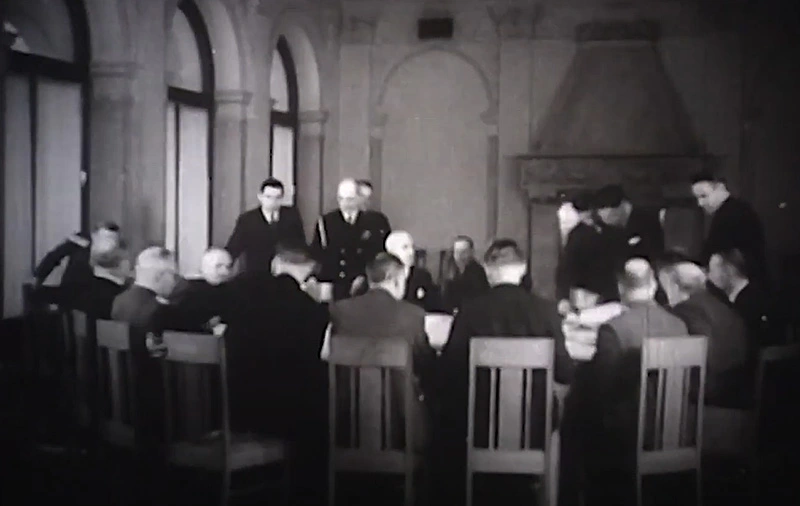Following the liberation of Korea in 1945, the Korean Peninsula experienced a series of events and conflicts as it sought a new political order. The “U.S.-Soviet Joint Commission” and Rhee Syng-man’s Jeong-eup remarks, in particular, are considered to be the primary causes of the division of the Korean Peninsula and illustrate the complex political dynamics of this period.
The conflict sparked by the Moscow Trilateral Foreign Ministers’ Conference culminated in tensions between the left and right, and it was in this context that North Korea began to operate a de facto independent government with the establishment of the “Provisional People’s Committee of North Korea” in February 1946.
This was under the strong influence of the Soviet Union north of the 38th parallel, which divided the Korean peninsula into North and South, and North Korea was already well on its way to building a state based on a communist system.
In March 1946, the United States and the Soviet Union began discussions to establish a provisional government and introduce trusteeship on the Korean peninsula based on the decisions of the Moscow Trilateral Conference of Foreign Ministers. However, during the first “U.S.-Soviet Joint Commission,” the two sides had a serious disagreement over the participation of political parties and social organizations in the establishment of a provisional democratic government in Korea.
The Soviet Union argued that only those forces that supported the decisions of the Moscow Trilateral Foreign Ministers’ Conference should be included, while the United States countered that all groups should be allowed to participate in the consultations. This disagreement led to the breakdown of the negotiations, and the conference went into indefinite recess after May 1946.
Following the failure of the first U.S.-Soviet Joint Commission, Rhee Syng-man made historic remarks on June 3, 1946, in Jeong-eup, Jeollabuk-do, where he noted that the timetable for resumption of the U.S.-Soviet Joint Commission was unclear and emphasized the need to establish a sole government in South Korea.
Rhee Syng-man argued for the removal of Soviet influence north of the 38th parallel and the establishment of an independent government in the South alone. This statement was supported by the Democratic Party of Korea and was instrumental in laying the political groundwork for the establishment of a sole government in the South.
Jeong-eup speech
Now that we see no sign of resumption of the indefinitely adjourned session, and we look forward to a unified government, but it is not forthcoming, we must organize a provisional government or committee in the South alone to appeal to the world public opinion for the withdrawal of the Soviet Union from the 38th parallel.
You should also make up your minds.
Also, since we have been making efforts to establish a national unification agency, but this time we will immediately establish a representative unification agency of our people after hearing the news, I hope that each province will obey the central instructions and organize their activities.
As Rhee Syng-man’s Jeong-eup remarks raised the possibility of a North-South division, center-left and center-right forces launched a joint left-right movement to prevent it.
Kim Kyu-sik and Yeo Un-hyung formed the “Left-Right Joint Committee” with the goal of establishing a unified government encompassing North and South Korea, and published the “Seven Principles of Left-Right Joint Action.
The principles were proposed as part of an effort to reunify the two Koreas, but lost steam due to the lack of participation from important political figures of the time, including Kim Gu, Rhee Syng-man, and the Korean Communist Party,
It was frustrated by deep disagreements between the left and right on issues such as trusteeship, land reform, and punishing pro-Japanese factions.
The left-right unity movement was initially supported by the U.S. military government and popular support, but was ultimately frustrated by the escalation of the Cold War and internal conflicts.
The assassination of Yeo Un-hyung in 1947 was particularly devastating to the movement, setting South Korea on a path to establish a unitary government.
The Seven Principles of South-South Cooperation
1. Establish a democratic provisional government in accordance with the decision of the Moscow Trilateral Foreign Ministers’ Conference by the left and right of the two Koreas
2. Issue a joint statement calling for the resumption of the US-South Korea Joint Commission.
3. land would be confiscated, confiscated with conditions, or purchased and distributed free of charge to peasants, and important industries would be nationalized.
4. Reintroduce an ordinance to punish pro-Japanese and national traitors.
5. release political prisoners and stop terrorism from the North, South, Left, and Right.
6. The authority, composition, and operation of the legislative period would be drawn up and implemented by a joint left-right committee.
7. guarantee freedom of speech, assembly, association, publication, transportation, and voting.
After the failure of the “Smile Joint Committee,” the Korean issue was taken to the United Nations. The discussions at the United Nations ultimately made it impossible for the two Koreas to establish a unified government, and the peninsula remained divided into North and South Korea, each establishing their own government.
With the establishment of the South Korean government in 1948 under the leadership of Rhee Syng-man, and the subsequent establishment of the “Democratic People’s Republic of Korea” in North Korea, the division of Korea was cemented.
Rhee Syng-man’s Jeong-eup remarks and the failure of the “Smile Joint Commission” were key events that accelerated the division of the Korean peninsula. The historical events of this period continue to have a profound impact on North-South relations to this day, and it’s important to revisit their meaning.
These events are not just history, they are essential to understanding current and future issues on the Korean Peninsula.

